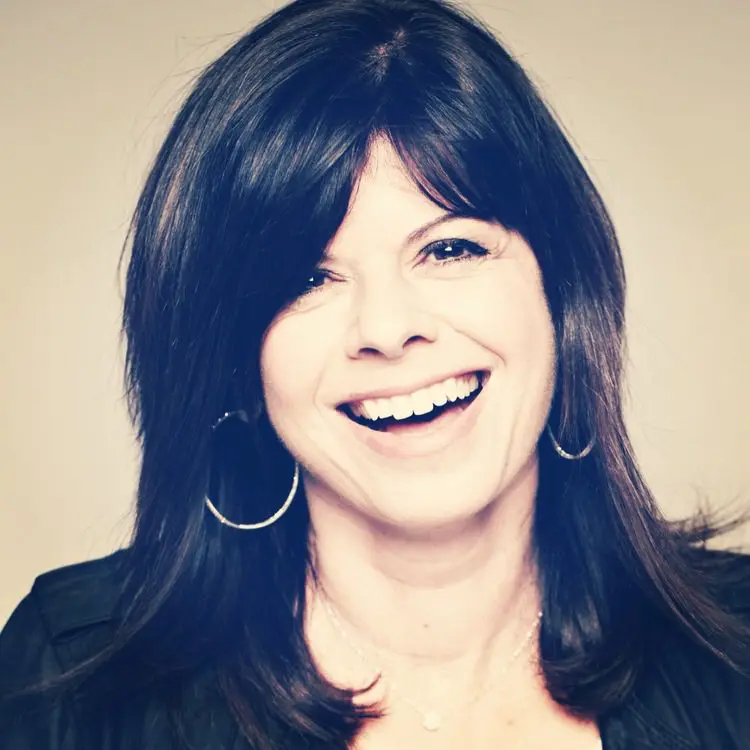

12 Tips for Learning to Code After 40 (+ How to Make a Career Change)
source link: https://learntocodewith.me/posts/career-change-at-40/
Go to the source link to view the article. You can view the picture content, updated content and better typesetting reading experience. If the link is broken, please click the button below to view the snapshot at that time.
12 Tips for Learning to Code After 40 (+ How to Make a Career Change)
Updated on March 29th, 2021 | Sign up for learn to code tips
“Tech is a young person’s game” is something I hear a lot. I get emails from readers and podcast listeners who are considering a career change at 40, 50, 60, or beyond, and are wondering: am I too old to be a programmer?
That’s one question I’ll NEVER answer with a “yes.”
Because if a career change at 40+ is something you want to do, it’s absolutely possible. And here to prove it are four people who’ve done it themselves. They have tons of useful advice about starting a programming career at 40+.
Disclosure: I’m a proud affiliate for some of the resources mentioned in this article. If you buy a product through my links on this page, I may get a small commission for referring you. Thanks!
Why Make a Midlife Career Change Into Tech?
Switching to a job in tech can be a good idea for a number of reasons! Here are some reasons why starting a programming career at 40 (or older) is a compelling option:
- 📈 Learning to code can advance your career, no matter which job you choose.
- 💰 You can increase your salary; for example, software engineers earn $110,125 on average per year in the US.
- 💻 Coding careers are in demand, which means it may be easier to actually land a job. Employment in computer and information technology occupations is projected to grow 11% from 2019 to 2029, much faster than the average for all occupations.
- 💡 The work is meaningful; you can contribute to innovative projects that serve a real purpose and make a difference in the world.
- 🛋️ Tech jobs are often flexible (work from home, flexible hours, etc.), which can be super important later in life.
- 🧠 Coding as a career offers challenge and variety, which helps you stay excited and mentally stimulated by your career instead of burning out.
Ultimately, coding careers are some of the best jobs to retrain for at 50 or around that age, since they offer flexibility, the chance to save more for retirement, etc.
Here are 12 top tips about getting into tech after 40!
1. Don’t buy the lie that you’re too old to code

Syk Houdeib has experienced several industries over his career, from studying music to working in the restaurant business to teaching English as a second language. He didn’t write his first HTML snippet until he was 39. Now, he works as a front-end developer at a startup in Madrid. “I wanted a new challenge,” he said. “Something that would push me well out of my comfort zone.”
As Syk points out, “Time will pass, whether you start now or not. Never think that it’s too late. Once you start the only thing that will stop you is if you stop. If you keep going, you will make it.”
➡️ Coding career changers on Twitter:
Head back to the table of contents »
2. Know that tech welcomes all backgrounds
During a midlife career change, you can absolutely get a great job in tech without a background in tech. When Syk first started thinking about becoming a developer, he would read articles about others who had changed careers into tech, and feel skeptical that he could do the same. “I kept on looking for something in the writer’s background that made them ‘special,’” he says. “Something that made them suited for this job. Something that I didn’t have.”

But, he continues, “I have since come to understand that this is not how it works. There aren’t any ‘special’ requirements to becoming a developer. I’m not going to tell you it’s easy, but all the requirements are things that are in everyone’s reach. You have to be willing to work hard, learn a lot, and be consistent. You need to persist when things get tough. Everyone can do these things with a bit of practice.”
Coming from a background of music, restaurant work, and teaching, Syk knows better than most that career retraining in tech is accessible to anyone. “I started with no related background study, no money to spend on expensive courses, and wasn’t even particularly skilled with computers,” he says. ‘Everyone’s circumstances are different, but I learned that if you put your mind to it, you can do it.”
➡️ Coding career changers on Twitter:
There are also tons of programs, initiatives and scholarships that help people from disadvantaged backgrounds/minorities get into tech. Check out these 43 tech career resources for people of color and these 26 organizations in the US and overseas that teach coding for women and girls.
Head back to the table of contents »
3. But don’t underestimate the challenge ahead of you

Kevin Smith’s journey in tech has come full circle thanks to his midlife career change. After high school, he got a job as a technician building computer chips, and loaded up on programming classes as he studied electrical engineering in college. However, during his junior year, he quit school and his tech job to pursue his passion for music. He became a jazz guitarist, a cruise ship musician, and a music teacher after earning a master’s degree in music.
But programming stayed in the back of Kevin’s mind, and at age 47, he jumped back in and started learning web development for real to train for a new career. “I found freeCodeCamp and started there. I worked my butt off. I struggled through a lot of things, but some things started to click. YouTube videos helped me get through difficult spots.”

The real challenge of his burgeoning coding career began once Kevin actually began job-hunting. “I probably sent out 500 applications, did 30 coding challenges, 20 phone interviews, and about 10 times I got to the second interview. I made it to the final stage three times.”
After all that, Kevin accepted a full-time job as a React Native developer, but he emphasizes that it wasn’t easy. “Yes, it is more difficult for someone over 40,” he says. “Disabuse yourself of the idea of getting a job fast. There are people that won’t even consider you. But there are also people that will value life experience and wisdom. There are great jobs out there and one has your name on it. But it’s going to take time and work to get to it, and that’s a good thing. If this were easy, everyone would do it.”
🎧 If you need help with productivity and time management while learning to code, check out these podcast episodes that offer advice and tips for staying focused and motivated:
Another great strategy for staying motivated, focused, and consistent is by trying a #100DaysOfCode challenge where you code for a minimum of an hour every day for 100 days. Here’s more about the challenge.
Head back to the table of contents »
4. Work out how your previous career/skills relate and use them to your advantage

Debby Alberts has spent her career in all things design and creativity, from graphic design to advertising to merchandising to heading up creative departments. So for her transition into tech at 58, UX design was the perfect fit: it gave her the chance to learn new things, but also complemented her current skillset. “I wish I had known how smooth the transition would be,” she says. “I didn’t realize how much I already knew both in the research side and the UI side. Best practices are best practices no matter what the field.”
Her career change at 50+ proved to be a smart choice, as Debby now works as a UX strategist full-time. “Leverage your past experience in any way you can,” she advises. “You might be surprised at how much you already know.” If you can find a tech role that overlaps with things you’re already doing, it will make your transition that much easier.
Tons of people have transitioned into tech from entirely different careers, leveraging their past skills to succeed in tech.
- Bekah Hawrot Weigel is a mother of four who switched from teaching to front-end web development.
- Chris Misterek made the pivot from pastor to web designer.
- Caitlyn Greffly went from selling beer to software development. And that’s just a small sample of people who’ve switched to tech a little later in their careers!
➡️ Coding career changer on Twitter:
Head back to the table of contents »
5. Start with free/cheap online courses before committing to a more expensive course
When Debby was transitioning into UX design, she jumped straight into the UX Design Immersive course at General Assembly in Santa Monica. While it worked out in the end, she wishes that she’d prepared with more self-learning first. “I would have done some online learning before I took the GA course.”

Check out these 100+ places to learn to code for free. The other benefit of starting this way is that you can make sure you enjoy the subject you’ve chosen before committing a significant amount of time and money to career retraining. Which brings us to the next piece of advice!
Head back to the table of contents »
6. Try different sites, languages, and projects
There’s not just one path to success, especially with midlife career changes. Different methods will appeal to different people—and Syk has seen this firsthand. “Three of us started around the same time learning to code for a career change: my partner, myself, and a good friend. All three of us are now working in the field, and there is very little in common between our approaches. Each one followed the material and methods that worked for them.”
When you’re first starting to dabble with the idea of starting a programming career at 40+, try free coding tutorials to see what languages appeal to you. The goal is not to hop around for too long, but to explore your options long enough to find something that clicks. Once you’ve chosen a path, start diving deeper with paid courses, coding bootcamps, meetup groups, etc.
If you need a little more help choosing a path, you can also check out Find Your Fit, a step-by-step course that will help you get started and find your place in the tech world, including what jobs are available, how to find the perfect role for you, and how to take any experience you’ve had before and use it to find a great tech job.
Here’s a list of places to start learning to code:
If you’d like help deciding which platform to commit to, we also have in-depth reviews of various coding platforms to help you find the one that’s right for you. Check them out here:
Head back to the table of contents »
7. Set a deadline for your midlife career change
Deadlines might be intimidating, but for Syk, it was a useful step. “I did not want this objective to end up on a to-do list I never see again,” he said. “It was spring of 2017, so I promised myself that the following school course was going to be my last as a teacher. So by September 2018, a little over a year later, I had to be working in the field.” (Spoiler alert: he did it!)
Especially when you’re considering a career change at 50+, deadlines can help because you might not want to spend too much time and money on career retraining. Opting for short-term courses with high salary potential (e.g. a coding bootcamp) could be a good option to help you hit the ground running quickly.
➡️ On Twitter:
Head back to the table of contents »
8. Build things on your own
A sure-fire way to put your new coding-career skills to the test is to start a project of your own. “Don’t get me wrong, all those tutorials and such are great at getting you ready,” Kevin says. “But you actually need to build things—actual apps and sites. And the apps and sites you build from tutorials don’t count. Interviewers can smell those from a mile away and roll their eyes. They don’t want to see if you can copy the Mona Lisa. They want to see if you can create your own work of art, from beginning to end.”

During Kevin’s job hunt, he saw this personally. “When I interviewed and they looked through my portfolio, that’s what interested them. 90% of their attention was on the stuff that I’d built of my own volition, even though that probably only represented 25% of my portfolio.”
Need project ideas? In this podcast episode, Parker Phinney shares how to brainstorm project ideas and covers example web development projects you can build. In this episode, Safia Abdalla explains how contributing to open source projects can help launch your tech career — including how to find your ideal first open source project. Plus, here’s a list of JavaScript projects to try building for your portfolio.
Starting a side gig can also be a great way to build up your coding portfolio — and earn some money while doing it. Check out these examples of technical side gigs you can start. If you want to know how to make a career change while you’re still working your former job, easing into it with a coding side gig could be just the thing.
Head back to the table of contents »
9. Surround yourself with a network

Nathalie Christmann-Cooper started dabbling with code in her late 30s. Her gateway was running a business with her husband: they needed a website, didn’t have the budget to hire someone, and the rest was history. She quickly found herself enjoying everything she was learning about web development and design and the challenges she encountered.
In her 40s, Nathalie launched a tech startup of her own, but decided that having more professional tech experience would benefit her as a founder. She joined the Le Wagon bootcamp to study full-stack development, and loved that challenge too. At age 48, she landed her first full-time job as a software engineer. She now works at Buyapowa.
For her, support and community was invaluable during her midlife career change. “Surround yourself with a good support network to help you push through the hard moments when you’re really out of your comfort zone deep in a learning curve,” she says. “Tech moves so fast that we are all constantly learning, even the most seasoned developers. You’ll be in good company.”
Connections come in handy beyond the learning process too, says Kevin. “This can’t be stressed enough—a lot of job opportunities will come from people you know. Go to meetups and meet people. Talk about your hopes. Talk about what you’re building. Ask other people the same. Try to think of development as a social activity. Maybe they know someone with a job for which you are qualified. Maybe they can review your code or work with you on a project. And you could learn some cool things by returning the favor.”

This can even be done online, as Syk experienced: “Twitter was a cornerstone of my experience. Especially the incredibly supportive and warm #100DaysOfCode community.”
If you connect with someone who’s experienced in the field, it could even turn into mentorship, like it did for Debby. “Try to develop a mentor relationship with someone in the field that you admire,” she says. “I did with my instructor, and it’s thanks to her that I got UX work.”
Head back to the table of contents »
10. Build an online presence
Making a name for yourself is often done online these days. Let colleagues and companies know who you are. “Get an email, web domain name, LinkedIn, Twitter, Facebook, YouTube channel, etc.,” says Kevin. “A professional portfolio site is an important tool, it is your primary form of advertising. Whether you want to work as a freelancer or are trying to land a full-time job, this is your billboard. It needs to be a good site. If you are cursed with a very common name (like me) you may have to find a way to make your ‘brand’ unique.”

When building your website, some web hosting options to check out include Kinsta, Bluehost, DreamHost, Liquid Web, and WP Engine. Find out why Kinsta is my favorite in this post.
A LinkedIn profile is the other professional must-do. “Not all, but some employers rely very heavily on LinkedIn,” Kevin adds. “Some recruiters exclusively hunt there.”
Get tips to optimize your LinkedIn profile with this free course by Udacity. Land the Perfect Job with LinkedIn is another great course that can help you make the most of LinkedIn in your job search.
Head back to the table of contents »
11. Let your interesting personality shine
While this should be tailored to the vibe of the interview, it’s not always in your best interests to be too formal at a tech company. For those making a career change at 50+, this could be very different than the environment they’re used to.
“I think a lot of people are afraid of hiring an old fuddy-duddy,” Kevin says. “In interviews, try to seem young at heart and easy going. Your goal is to sound like someone they want to see for 40 hours a week. In interviews, I always tried to be animated and open. I had a few jokes on hand. I sounded competent, but also fun. I think that my life’s experience (years of working as a musician, working on cruise ships, travelling the world, an MA in Music) helped me seem more interesting and more well rounded.”

Using this method, Kevin even made an impression at a company where he didn’t get the job. The interviewer personally called to say, “Hey, I’m sorry you didn’t get the job. But I wanted to call and let you know that I think you’re doing well and are on the right path. I also wanted to thank you because it was so much fun to talk with you.” He remarked that interviewing a lot of people was like talking to a block of wood.
Head back to the table of contents »
12. Never stop learning
If you’re interested in a career change at 40+, lifelong learning is probably a prospect that excites you!

“If you don’t love learning, this may not be the field for you,” Kevin says. “Language specifications change, libraries evolve, APIs get revamped. You need to keep learning.”
Keeping up-to-date with industry news is important too. “I follow UX blogs, subscribe to UX related newsletters and try to learn something new every day,” Debby says. “UX is a constantly changing and evolving discipline.”
Professional development may come with your job, or you might seek out your own opportunities to keep your knowledge and skills fresh, like meetup groups, conferences, or courses.
Pluralsight is an online learning platform that can help you stay up to date with your tech skills. It offers a free assessment to get your Skill IQ (i.e., a quiz that identifies your knowledge gaps/strengths and suggests new courses to take to fill those gaps).
Head back to the table of contents »
Introductory Courses to Help You Make a Career Change at 40 (And Beyond)
Ready to get started learning how to start a career in IT/coding yourself? Here’s a selection of introductory courses and resources about some of the best skills to learn for jobs in tech:
- Swipe to Unlock: The Primer on Technology and Business Strategy: An ebook that breaks down the must-know concepts of technology and business strategy. Get it on Amazon.
- Hello Coding 3.0 – Anyone Can Learn to Code in 99 Days (350 Hours): In this course for complete beginners from Mammoth Interactive, you’ll create a portfolio of 99 projects over 99 days.
- The Complete Web Developer Course 2.0: Learn web development by building 25 websites and mobile apps using HTML, CSS, Javascript, PHP, Python, MySQL, and more.
- Programming Foundations with JavaScript, HTML and CSS: In this course by Coursera, learn foundational programming concepts and how to solve problems like a programmer.
Learning to code and getting a job in tech is never easy, no matter what age you are. But there’s a reason people say that “nothing worth having comes easy.” You’re never too old to code or to change your life, and if tech is something that ignites a passion for you, you owe it to yourself to give it a go.
For more tips and inspiration, listen to this LTCWM podcast episode on how to make a midlife career change into tech!
Recommend
About Joyk
Aggregate valuable and interesting links.
Joyk means Joy of geeK